May 2016
Monthly Archive
May 31, 2016
Background
Healthcare providers—physicians, hospitals, nurses, laboratories—heatedly discuss the need to send order information quickly and balance the speed with information security. In the beginning of May 2016, The Joint Commission (Joint Commission on Accreditation for Healthcare Organizations; JCAHO) “…reversed its long ban on physicians and certain other clinicians using text messaging to place orders related to patient care, citing technology advances that enable more secure communication…” (see full article here).
We’ll leave that debate and the solution to the accreditation bodies such as The Joint Commission, HFAP (Healthcare Facilities Accreditation Program), and the information security experts.
What about Consumers?
What about us consumers? Do we think about the security of our content when we text PII (Personally Identifiable Information) or ePHI (electronic Protected Health Information)?
I receive informal updates from friends about their family members. And I suspect I’m guilty as charged for sending similar text messages. Consider this recent text I received (all details changed to protect the parties involved) from a friend to a group of us:
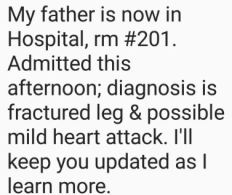
I appreciated the update and was concerned for my friend’s father. However, that text contained ePHI and none of us have an encrypted messaging system. True, we are not healthcare providers so we can share personal information. Yet the risk is still present for the information to be intercepted and brought into unscrupulous hands.
Points to Ponder
Before we text our personal network with our PHI or a family member’s PHI, let’s consider these points.
- What information do I really need to share?
- Could I convey the update or urgency without identifying details?
- Is my text message program encrypted?
- Is the recipient’s text message program encrypted?
- Do all recipients need the information?
Reframe
Perhaps we can simply say:
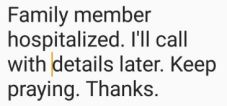
**
Resources
May 26, 2016
Posted by Sherri Leah Henkin under
Change,
Motivation,
Writing
Leave a Comment
With gratitude and kudos to Robin Sacks.
Ever feel like you’re mired in the mud, trudging along and not making much progress? Periodically I have days like that. And when I do, I’m grateful to find a pithy thought that reorients my thinking. Change Your Mind showed up just in time today!
I keep thinking the same thought train that has gotten me nowhere, that’s exactly where I’ll end up: nowhere. To reach a goal when I’m stuck, I need to—paraphrasing George Bernard Shaw—think differently about a situation. Then new possibilities open up! By thinking differently, I might even see a road I hadn’t seen before.
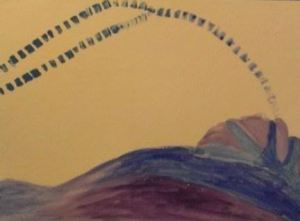
Then I can progress toward my goal.
What redirects your thought train?
**
Painting © Sherri Leah Henkin 2015
May 9, 2016
Last week I wanted to bake challah. I had no flour or yeast, and figured I’d be tired by the end of the week. How could I make challah? I decided that I would take one action a day and see what happened. On Tuesday, I purchased the flour and yeast. Wednesday evening, I pulled out the rest of the dry ingredients, bowl, mixing spoon, and the recipe. And on Thursday evening, I didn’t think I could do anything else but put the dry ingredients in the bowl. That meant, I would bake on Friday. With a full writing schedule on Friday, I might not get to the baking.
What’s my option? Should I try to prepare tonight? It’s already 7:30 PM and the dough needs to rise for two hours!
I decided to try. While working on each step in my recipe, I connected spiritually to women from many generations before me who prepared challah for Shabbat or chagim (holidays). The water, oil, and eggs went into the bowl. I realized kneading time—the activity that requires the most energy—had arrived. I didn’t notice the time; I kept focused on the task. Almost magically, the individual ingredients became dough.
As I shaped the dough into rolls, I remembered the first woman who taught me that technique. My mind wandered back to her kitchen where we chatted about everything from challah-baking to child-raising…and even writing!
The sticky dough was hard to work with, so I added more flour. I prayed that dough would turn into tasty loaves. I placed the dough in a warm spot and prayed for the dough to rise quickly, although I hadn’t used quick-rise yeast. About an hour later I looked at the dough that was about to overflow the bowl!
As I shaped the loaves and rolls, I prayed some more. This time, I prayed not for the dough but for friends who want children, friends who want to get married, for all of us who need respectful livelihood, and for a speedy recovery to everyone I know who is sick. The whole wheat dough looked like fine wood on which I shellacked the egg white. While the challah baked, there was a woody-wheat smell throughout my apartment.
At the end of the process that I didn’t think I could do, I had spiritual and physical tasty whole wheat challah to share!
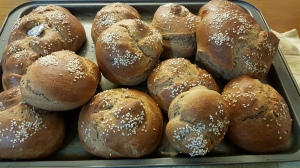
And a sense of accomplishment! I committed to one small step, took it, saw that I could accomplish it, and could move on to the next step.
Here’s my challah-baking-task-accomplishing recipe:
- Create a do-able plan that has three to five steps.
- Commit to accomplishing one step.
- Pray or take some spiritual action before that first step.
- Take the first step.
- Do more spiritual activity.
- This can be a simple plea like, “Help me.”
- Take another step.
- Repeat steps 5 and 6 until you complete your plan.
- Look at your accomplishment and celebrate!
May 4, 2016
Posted by Sherri Leah Henkin under
Family,
Memories,
Writing
[2] Comments
Several years ago, I found this statement, attributed to Claude Monet*:
One could not be any closer to the sea than I am, on the pebbled beach itself, and the waves beat at the foot of the house. You know my passion for the sea…I’m mad about it!
Monet might have made this comment during his stay in Le Havre or on one of his journeys to Normandy’s coastal towns. I’ve not traveled to Normandy; I have lived near the ocean, and I, too, am mad about it!
The soft quiet waves coming in from low tide calm me. Feeling cool blue-green water as I wade at the water’s edge refreshes me. 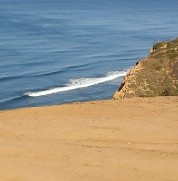 Watching the waves at high tide rise majestically and crack against the cliffs can scare me, until I sit still long enough to hear the rhythm.
Watching the waves at high tide rise majestically and crack against the cliffs can scare me, until I sit still long enough to hear the rhythm.
The rhythm produces a symphony; I almost hear the drums and cymbals!
Last week I visited a friend near the Pacific Ocean. Standing near the buildings, I could see the waves, and seagulls.  But I couldn’t smell the ocean air. What’s all this city smell if I’m so close to the ocean?
But I couldn’t smell the ocean air. What’s all this city smell if I’m so close to the ocean?
I walked toward the ocean, away from the buildings, the volleyball players, and the bikers. I dodged the sunbathers and kids building sandcastles. And I stopped to inhale deeply the salty energizing ocean air. I stood on the beach, oblivious to anyone, relaxing into the sea salt and ocean sounds.
The scene reminded me of my girlhood. I saw myself playing on the beach with my friends, building sandcastles. We gathered seaweed to hang as decorations on our sand structures. Then, having tired of the digging, we grabbed our shoe boxes and began our trek along the water’s edge to collect sea glass: colored glass pieces that the sea water had softened. We prided ourselves on how many boxes we could fill with these pastel opaque pieces.
And of course, the memory came up of swimming with my grandfather. We swam as far out as he felt I could—pretty far for a kid—and then swam back. No chatting; these swims were serious business for exercise and bonding!
The waves beat close to the beach house and gave me the gift of a life-long love for the sea!
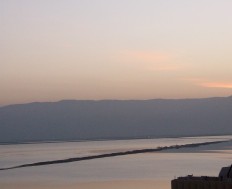
—
*Apologies to my readers: I recorded this quote without a source.
Photos © Sherri Leah Henkin






